Spiky plants are great for many reasons. Grown outdoors, they can be useful deterrents for animals or other intruders, making your house more secure. Indoors, they add interesting shapes to your collection with their pointy leaves and toothed edges.
Most of the plants with spiky leaves in this article are succulents that don’t require much care. They can survive weeks without water as most are drought tolerant.
While you may know some of the most common ones in this list, keep an eye on other attractive plants with dense thorns that you might have never heard about.
From cacti to succulents, learn about the best plants to add some texture and interest.
- Related article: Varieties of Houseplants
1. Agave (Agave Spp.)
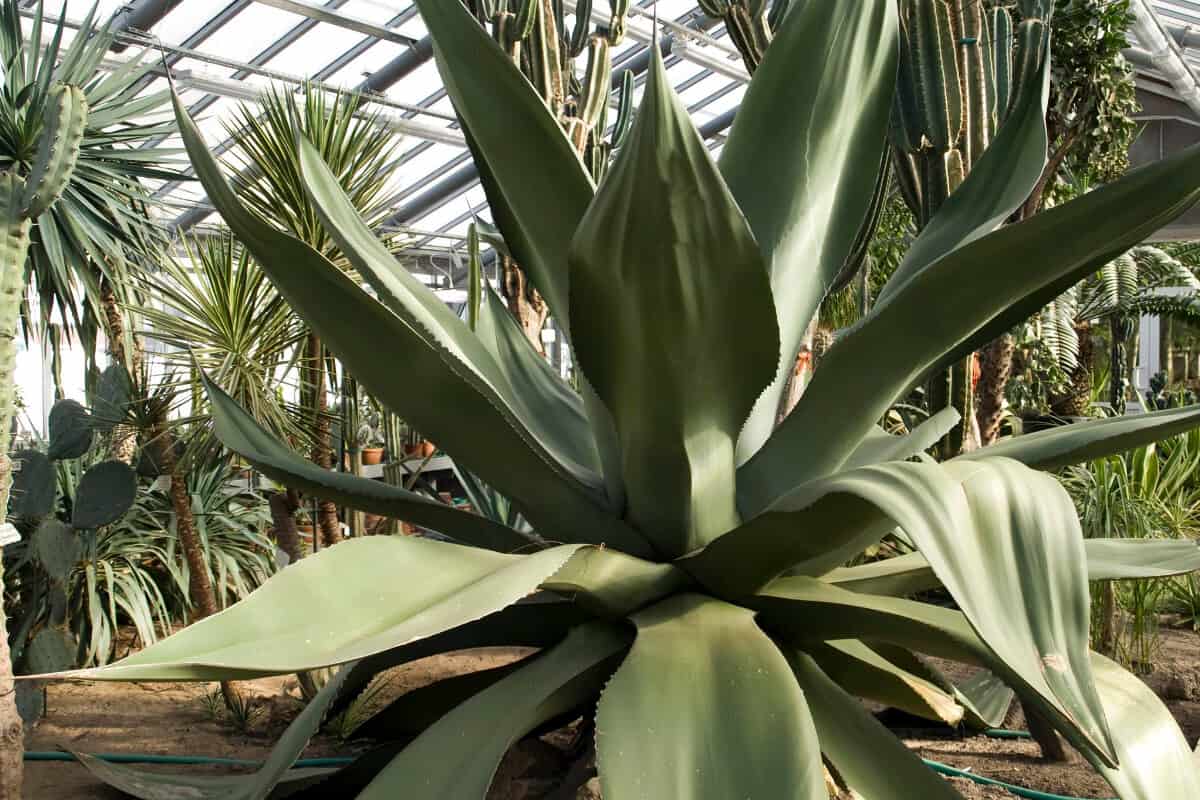
The most known genus of Agave is the A. Americana plant which is also known as the “century plant” or “sentry plant”.
This plant with spiky leaves is native to hot areas of the American continent and prefers arid conditions.
Agaves have dark green to steel blue foliage that has prickly leaves. Exercise caution around these plants as their spiny leaves can easily pierce the skin.
Different species of century plants can be grown indoors and outdoors—some even grow up to be 10 feet tall, even if a more common size is around 6 feet tall.
A. Americana “Marginata” has bright green leaves with yellow edges that may look a lot like a snake plant with the same variegations.
Century plants are long-lasting plants that can last for 10 to 30 years! To live this long, they will need plenty of sunlight and warmth.
2. Aloe (Aloe Vera)
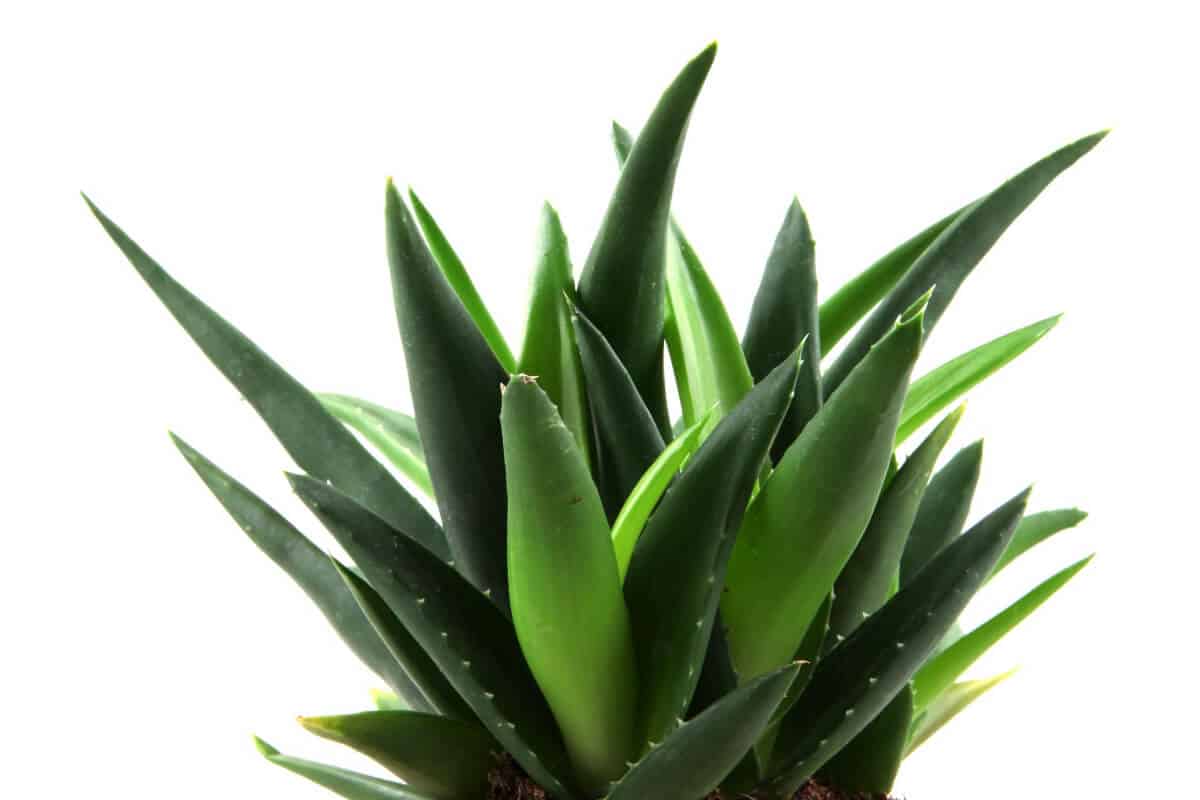
Aloe Vera is highly valued by many because of its medicinal benefits. It is used by many to treat several issues including hyperpigmentation, scalp issues, and burns.
It is also consumed by people as a drink that can address certain inflammatory and antioxidant concerns due to its vitamins, minerals, and amino acid content.
Aloe vera is very recognizable, thanks to its thick green foliage which often has small spikes on the edges. Not all aloes have them though, since these tend to grow on mature plants.
Aloe Vera is very low-maintenance and drought-tolerant as well.
3. Holly Plant (Ilex Spp.)
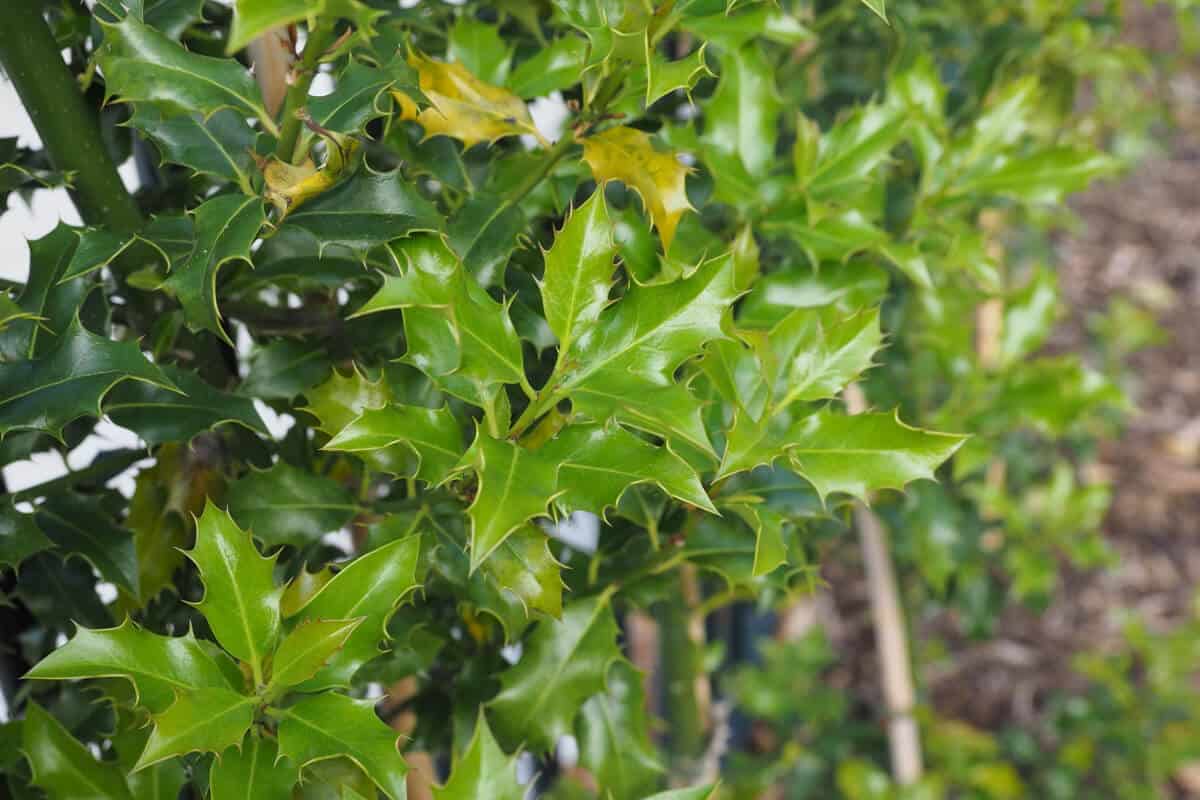
Holly plants have beautiful evergreen leaves and red fruit that are universally accepted as a Christmas symbol.
They are often used as hedging plants to protect with their spiky leaves. There are over 200 cultivars of this plant and some even have variegated leaves.
They also provide food and shelter for many wild animals and, thanks to the plentiful nectar they produce, they attract pollinator insects such as bees.
The Holly plant loves full sun, but it can also tolerate shade. These plants thrive in slightly acidic soil that is well-draining. While they are quite slow growing, they can reach 40 feet tall.
4. Bougainvillea (Bougainvillea Spp.)
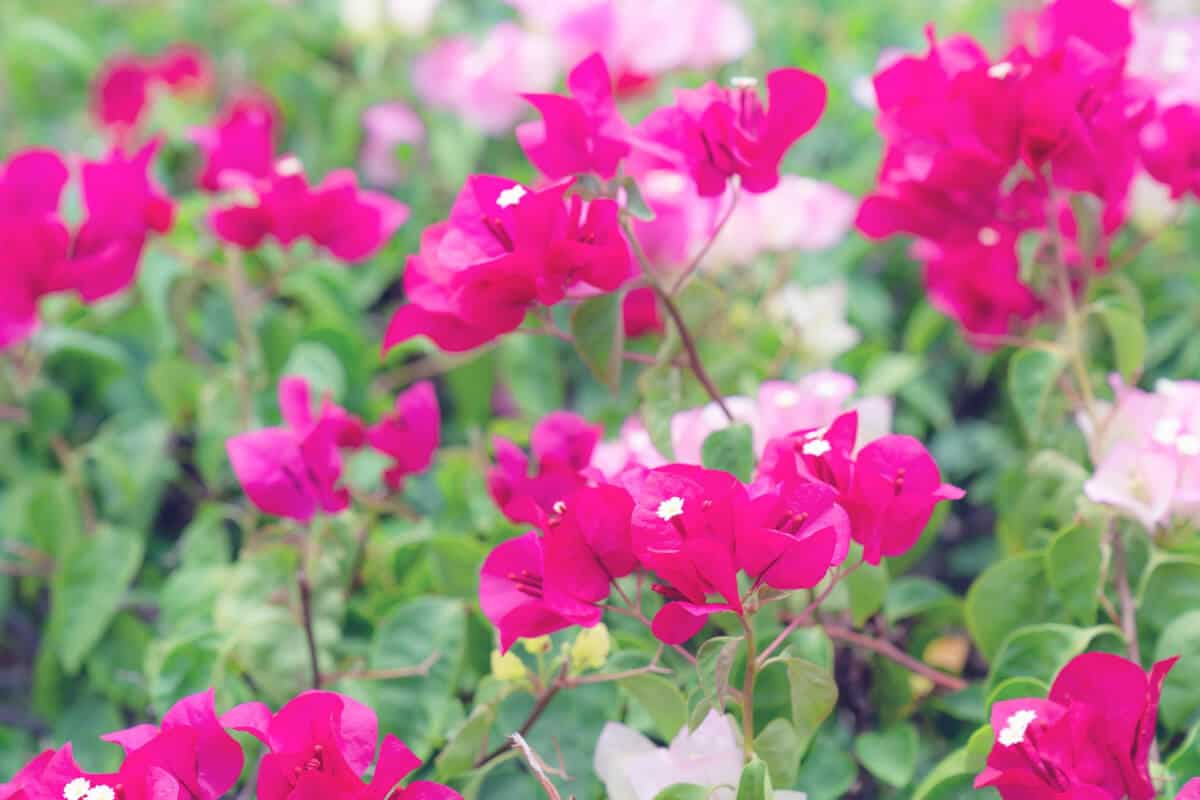
The Bougainvillea is a tropical vining plant that produces vibrantly colored flowers almost all year long.
The dense branches of the Bougainvillea are covered in vicious thorns that can be an efficient deterrent for potential intruders.
This plant is great to create a barrier hedge as it can grow to be 30 feet tall and wide. There are also ground cover varieties that will stay short but will spread up to 10 feet wide, and dwarf varieties which are more compact.
This plant also has climbing varieties that provide very efficient protection when grown over pergolas or other areas that may otherwise provide easy access upwards. It is an effective perimeter plant.
Colorful bougainvillea plants love sunlight and are drought-tolerant.
5. Hawthorn (Crataegus Spp.)
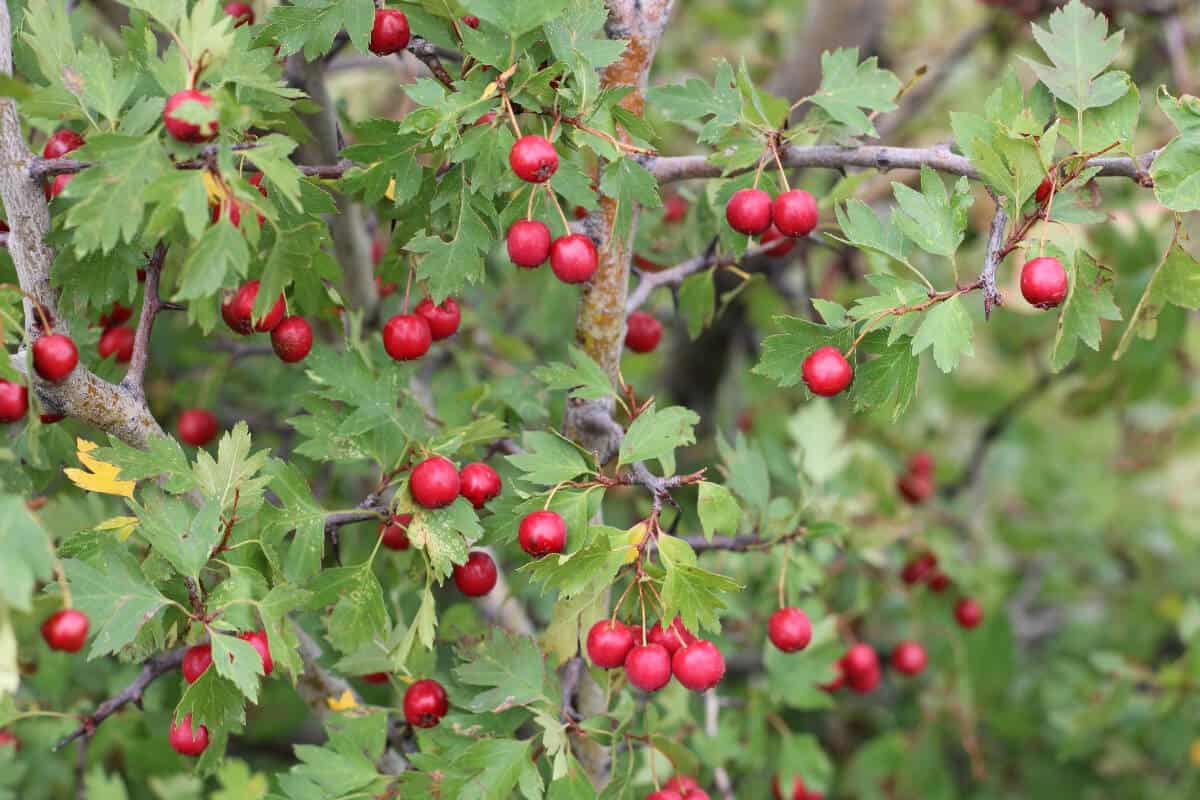
Hawthorns are shrubs or small trees named after their long and sharp thorns. They originate from Asia, North America, and Europe with temperate climates.
Another name for this shrub is “May Blossom” since in early spring, it’s full of small, white blooms. This shrub makes for an impenetrable hedge when pruned.
Both its young leaves and the berries are edible. The young leaves can be eaten in salads, while the edible berries are commonly made into jellies.
Moreover, these defensive plantings might have medicinal properties related to the treatment of certain heart conditions.
6. Porcupine Tomato (Solanum Pyracanthum)
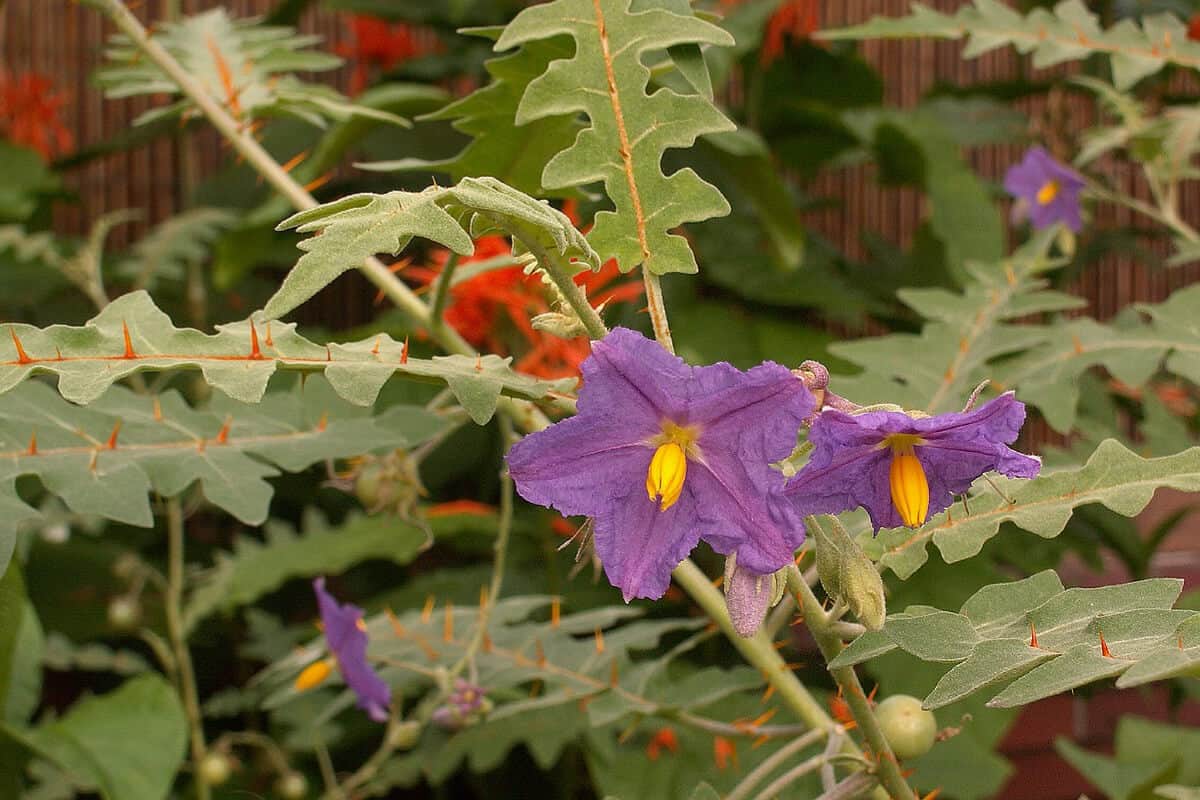
The Porcupine Tomato, also called “Devil’s Thorn”, is quite an unusual spiky plant. Native to Madagascar, this fast-growing plant belongs to the same genus as tomatoes, with which it shares some similarities.
It’s much appreciated as an ornamental plant because of its striking color combinations: orange thorns grow on top of the fuzzy gray leaves, and in the summer, lavender-colored flowers appear.
These are almost the same shape as those of other Solanum species, with yellow centers and a white line on the back of each petal.
Despite its beauty, all parts of the Porcupine Tomato are highly poisonous, which is why birds avoid its berries.
It is wise to plant this along fence lines, in borders, and mass plantings of potential pain.
7. Honey Locust (Gleditsia Triacanthos)
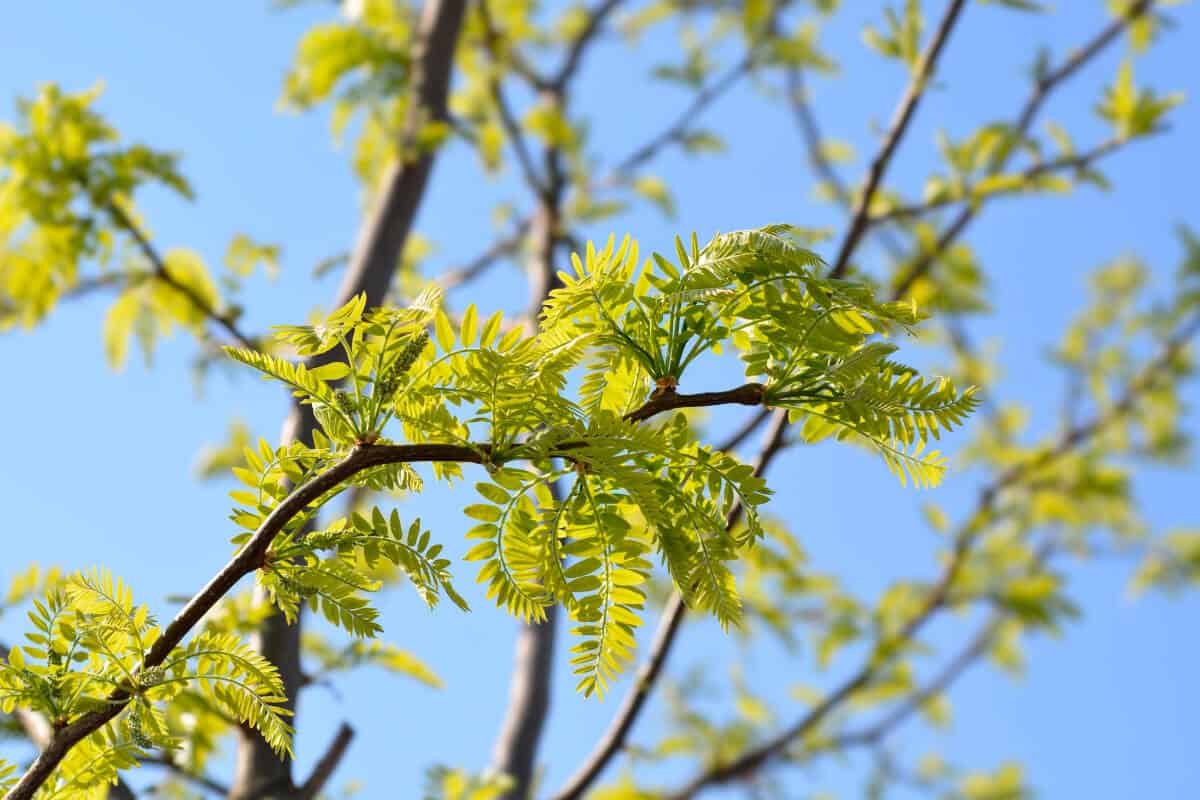
The Honey Locust is a tree that is entirely covered in sharp, evil thorns. These cannot be easily seen as they are the same color as the bark. This makes it a great option to grow in your yard for safety reasons.
This tree can thrive in urban environments with high levels of salinity. it is also drought resistant.
In their ideal conditions of well-drained and moist soil, these trees can grow quite quickly, reaching up to a commanding height of 100 feet. Pruning this tree may result in a single trunk.
Honey Locust flowers in late spring, with fragrant, cream-colored blooms.
8. Barberry (Berberis Vulgaris)
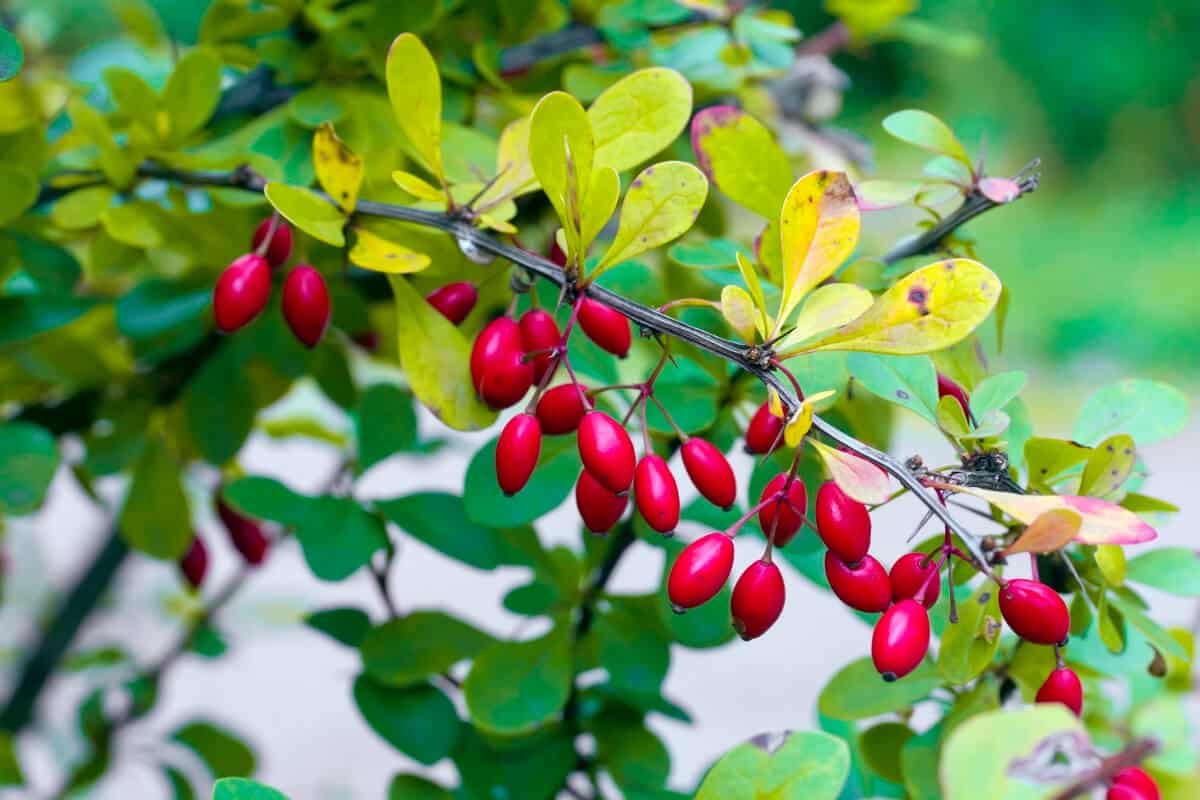
Barberry belongs to the 400 different species of evergreen and deciduous shrubs.
These shrubs are drought resistant and thrive both in full sun and partial shade. Its berries are nutrition-packed and are used in traditional medicine.
The red berries of this plant have a tangy tart-like taste and are rich in vitamin C and berberine, an antioxidant.
They might be tricky to harvest as barberry bushes are covered in sharp thorns, but they’re well worth the effort. You may also prune this plant to take up a bushy form.
Often planted as ornamentals, barberry’s attractive foliage conceals a darker side. The branches are covered with leaves that have a single thorn at each node. This makes barberry ideal for creating a dense, spiny hedge, or an impenetrable barrier.
- Related: Which Red Berries Are Edible
9. Golden Barrel Cactus (Echinocactus Grusonii)
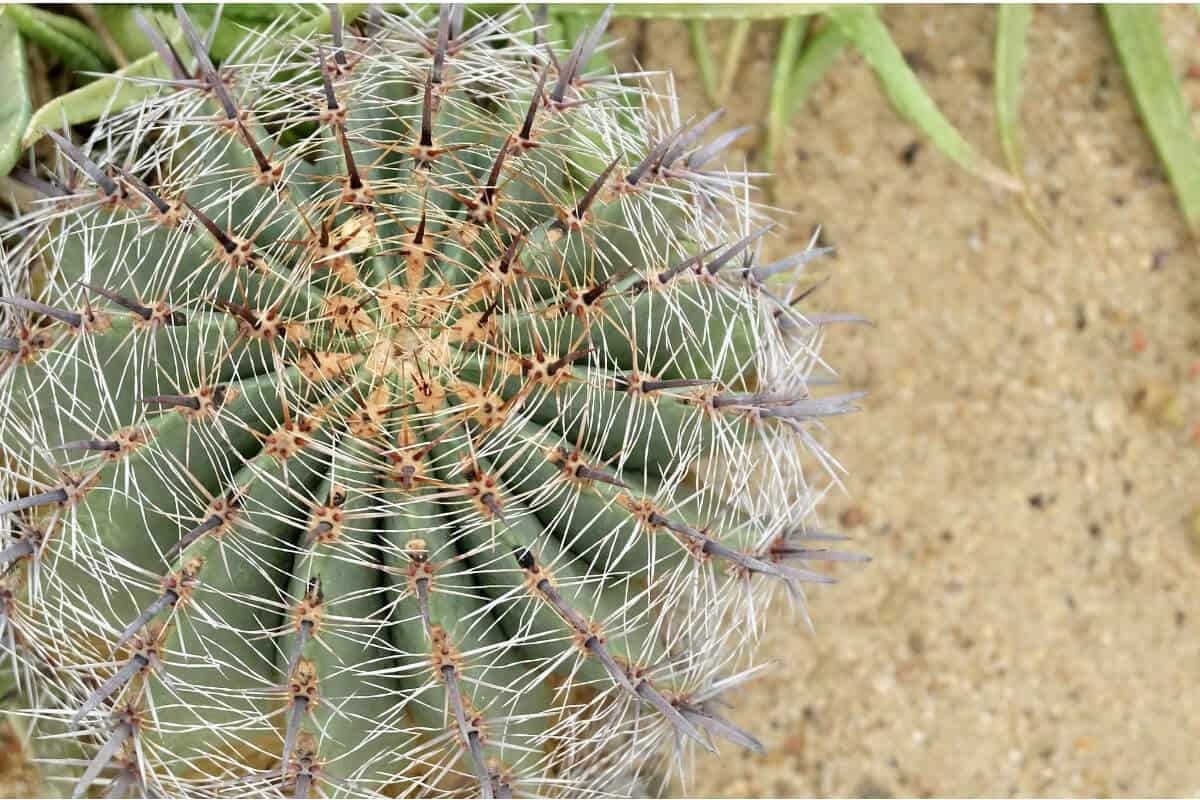
The Golden Barrel Cactus is a round cactus with yellow needles and white woolen hair. This cactus does best in desert conditions, requiring very little water and a lot of sun.
This barrel-shaped cactus can reach 3 feet both in height and diameter.
When planting this cactus, be sure to leave plenty of space around the base because if grows its offsets from its roots.
Just be careful when growing the barrel cactus close to your home so that they do not end up obscuring a potential escape route or areas that may require maintenance.
10. Fuchsia Flower Gooseberry (Ribes Speciosum)
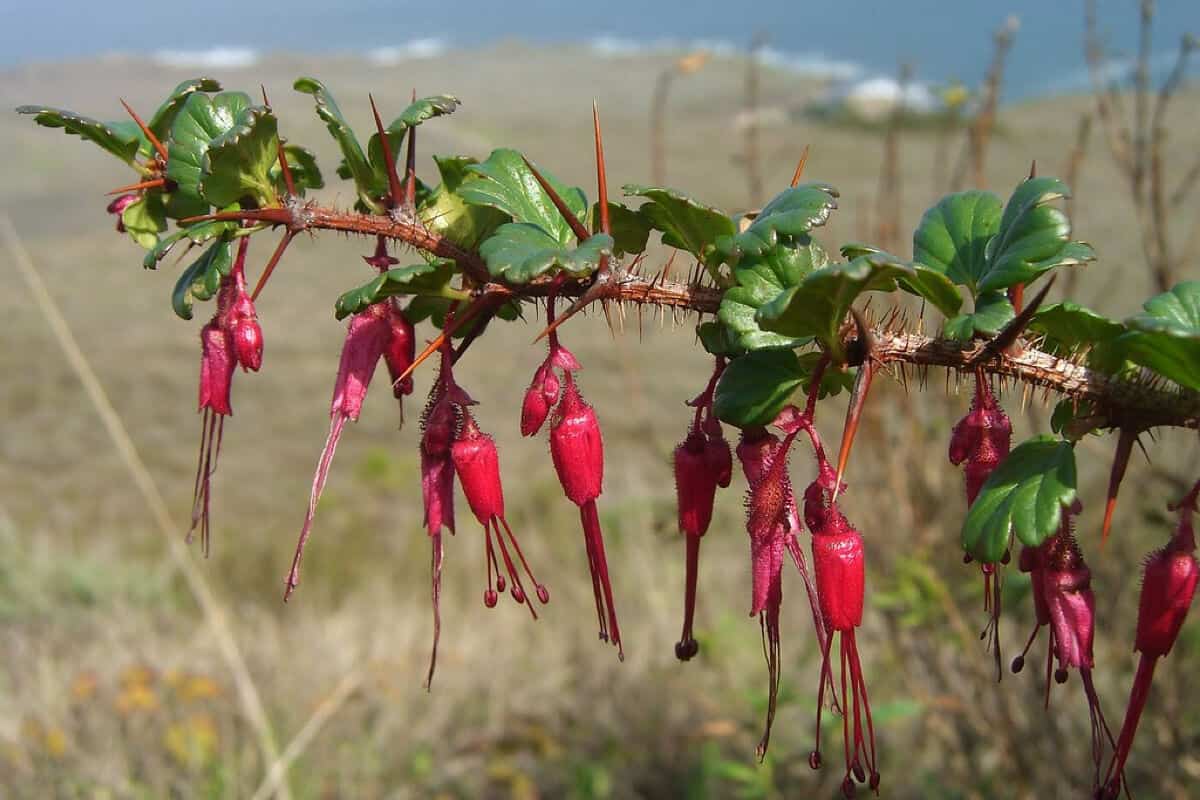
Fuchsia Flower Gooseberry is a colorful plant that produces fuchsia-red tubular flowers that hang down from its branched stems.
This shrub is native to California, where its beautiful blooms usually last throughout the wet season.
Unfortunately, during the summer, its foliage doesn’t look very attractive. In the hottest months, the delicate flowers fall, leaving the branches with their many thorns very visible.
11. Crown of Thorns (Euphorbia Milii)
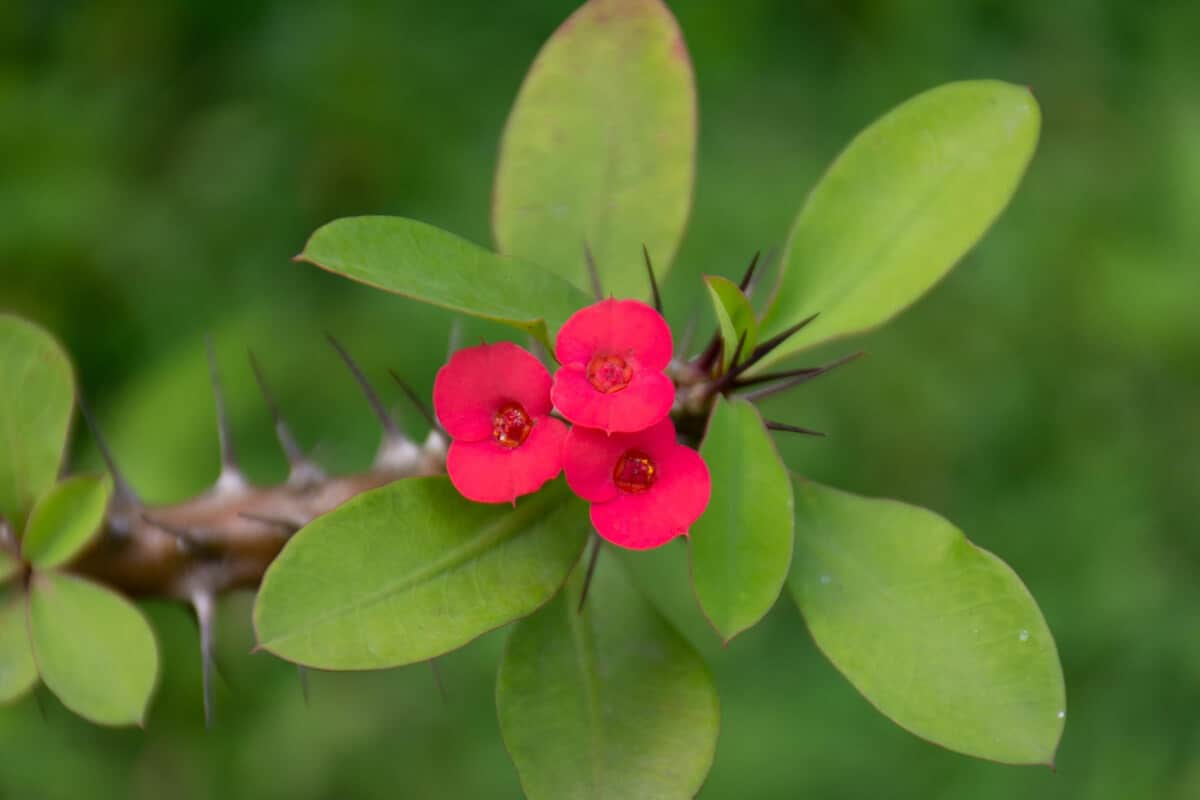
Despite its unappealing name, the Crown of Thorns or “Christ Thorn” is a beautiful succulent plant with tear-shaped, fleshy leaves that are covered in sharp spikes about an inch long.
The Crown of Thorns is native to Madagascar, where it can become 6 feet tall. You can however prune this plant if you want to maintain a compact form.
In the house, these plants usually grow half as much. The Crown of Thorns produces beautiful red, orange, pink, yellow, or white blooms.
Like most succulents, these defensive plants are heat-tolerant but cannot survive if watered excessively.
12. Devil’s Walking Stick (Aralia Spinosa)
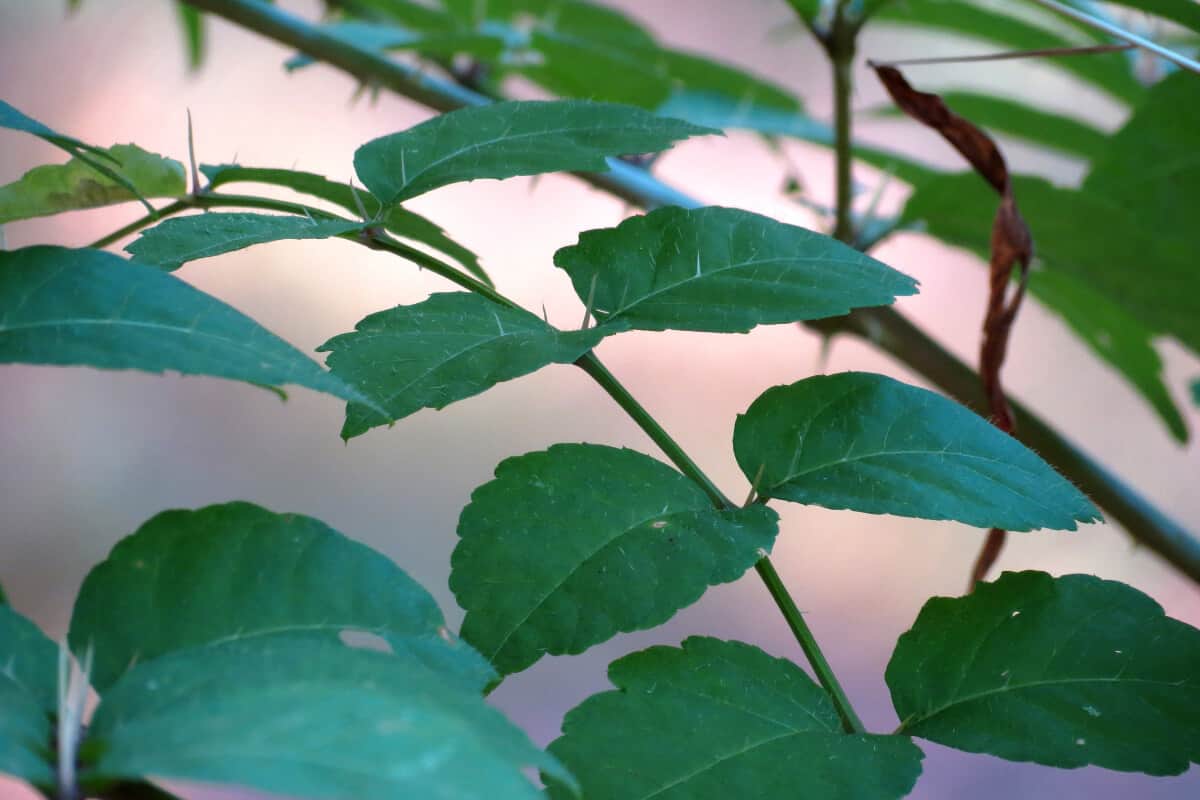
The Devil’s Walking Stick is a North American plant with long and sharp spines on its stalks, stems, and branches. It has white flowers and dark green leaves.
These plants can be shrubs or small trees and are common along the edge of woodland areas, but can also be grown as houseplants.
Aralia Spinosas thrive in full sun to partial shade and prefer moist and fertile soil conditions. They can also withstand non-ideal conditions, such as dry soils and the presence of pollutants.
Outdoors, the Devil’s Walking Stick can be over 30 feet tall. Its white flowers turn into purple berries in the autumn.
It would be best to keep your pets away from this plant however as it can be poisonous to them.
13. Honey Mesquite Plant (Prosopis Glandulosa)
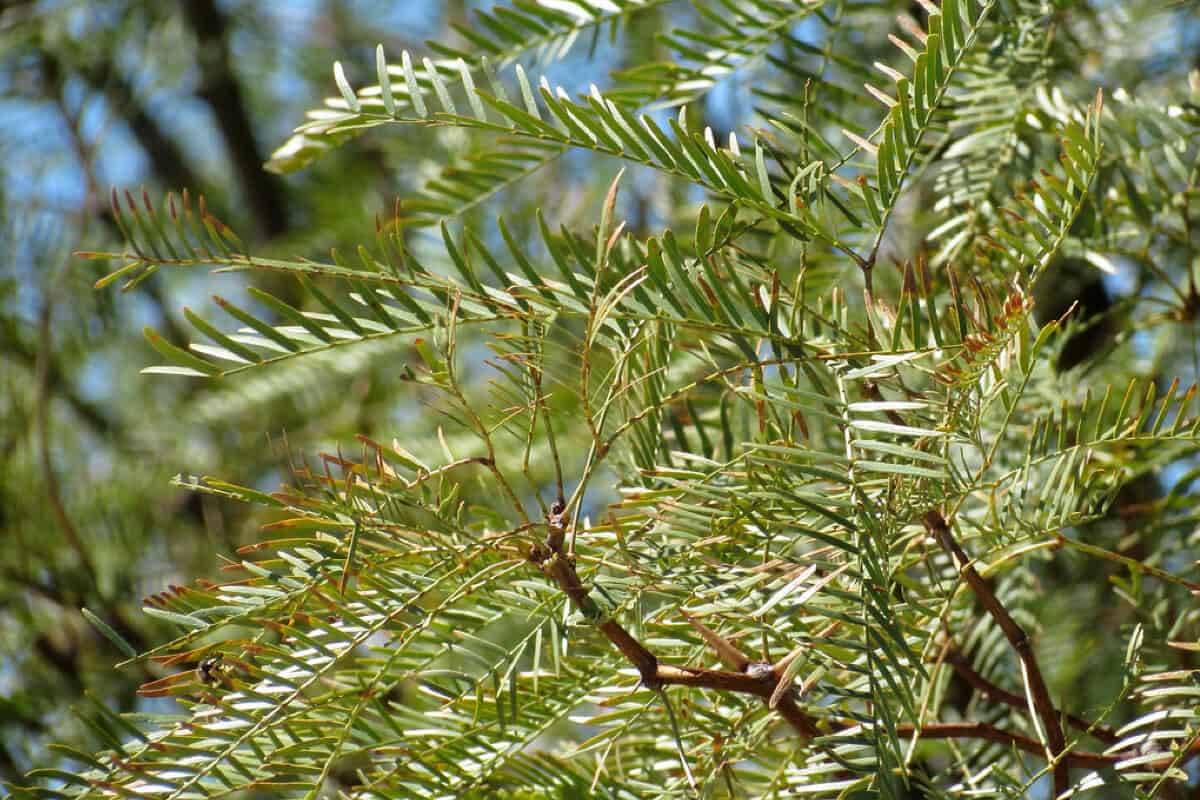
The Honey Mesquite Plant or “Devil Tree” had a reddish-brown bark with spiky leaves in a very bright green hue.
What makes this plant interesting is its twisted trunk with thorns.
This plant’s yellow-green blooms are very aromatic and appear anytime between April and August, depending on the climate.
Honey Mesquite is originally from the deserts of Northern Mexico. Through the years it has adapted to a wide range of conditions and can withstand extremely dry soils and excessive heat.
If the young branches of this tree are always trimmed, it will create multiple spiny stems of thorny branches that act as an effective barrier for intruders.
14. Firethorn (Pyracantha Spp.)
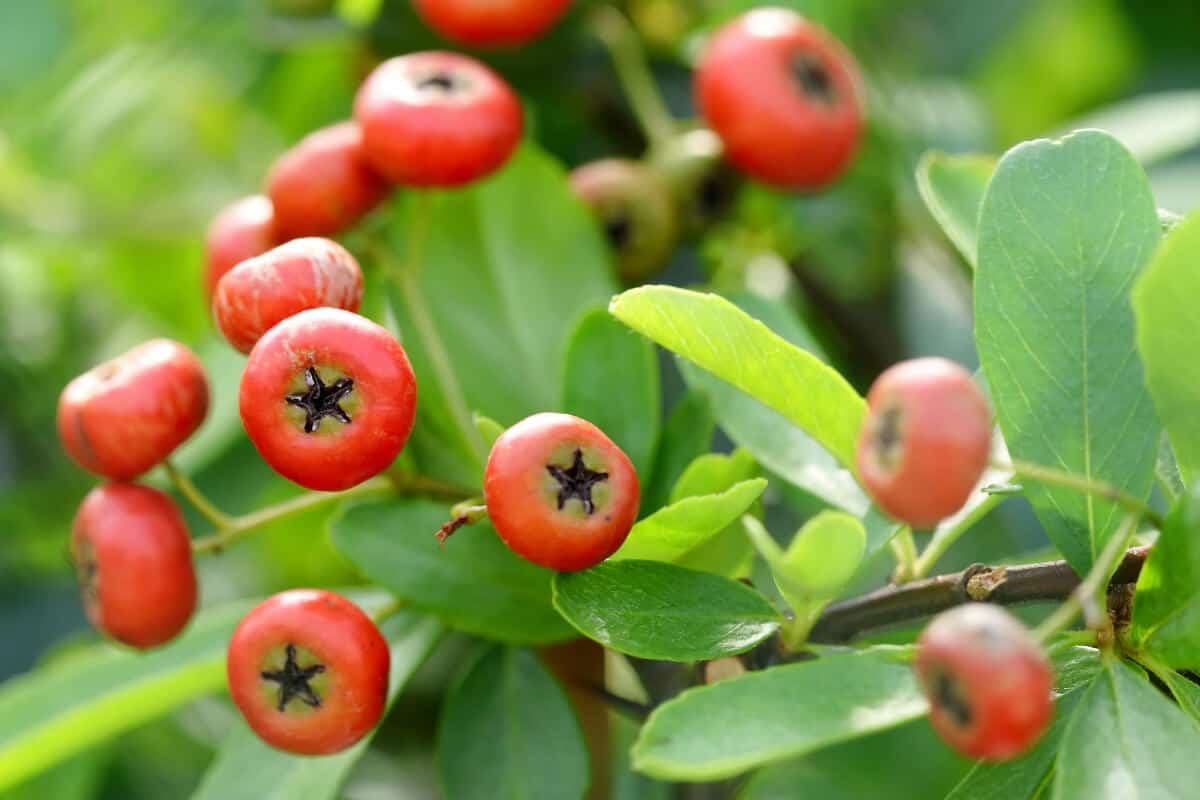
These evergreen shrubs hail from Europe and Asia and have beautiful flowers. Apart from that, their most stunning feature is their berries, which come in bright shades of red, orange, or yellow and appear in autumn or winter.
Firethorns look similar to Cotoneaster, with the difference of having many thorns on their dense branches. They are part of the genus Pyracantha of the family Rosaceae.
The berries are slightly toxic to humans but are a valuable food resource for birds during the winter. Firethorns thrive in fertile and well-drained soil.
15. Chinese Jujube (Ziziphus Jujuba)
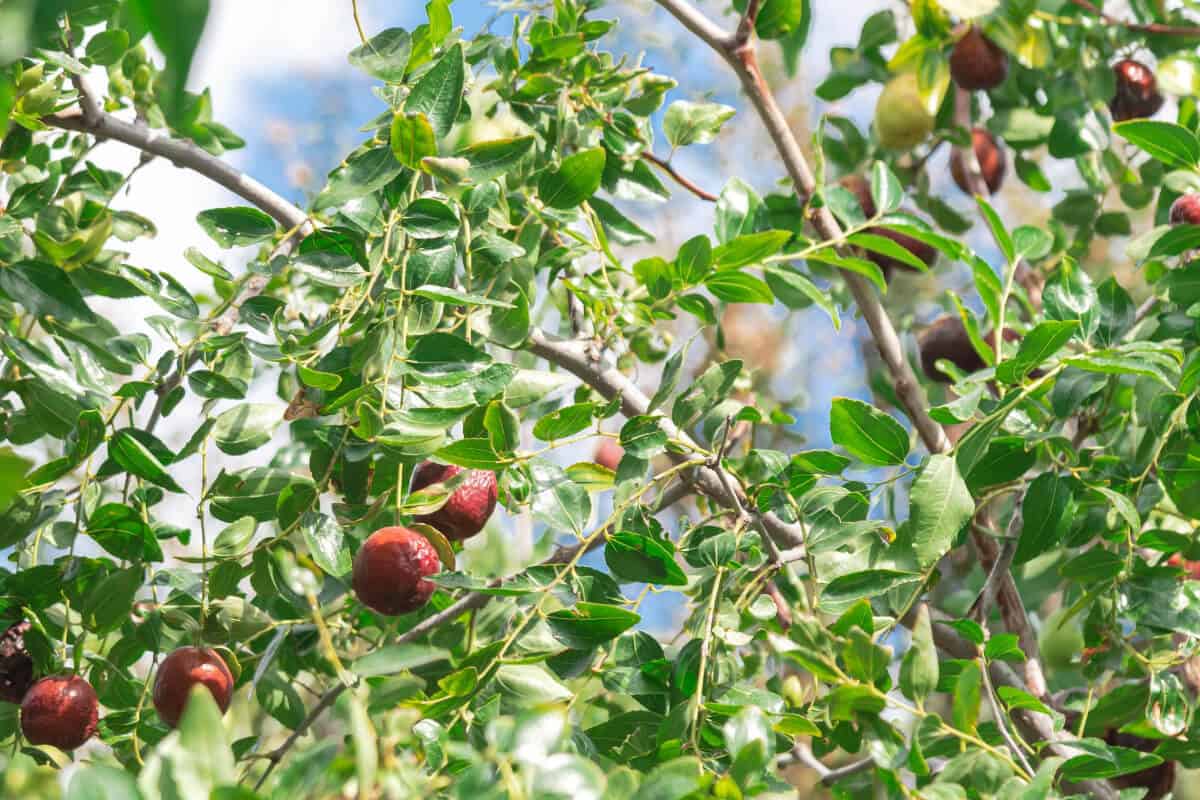
The Chinese Jujube tree is native to China, as the name suggests, where it’s cultivated both as an ornamental plant and for its nutritious fruit. These are also called Chinese Dates as they are similar in taste.
The Chinese Jujube is a tree that can become 30 to 40 feet tall and grows well in the United States. You have the option to prune it to maintain a compact shape.
Not all varieties have dense spines, but those that do have plenty of them on the branches should be handled with care. These trees provide an abundance of fruit.
‘Shanxi Li’ is a thorny, drought-tolerant cultivar suitable for growers preferring large, succulent fruit. It does well in full sun with well-draining soil.
Final Thoughts on Plants With Spiky Leaves
Plants with spiky leaves come in an array of forms and not only do they add an element of visual interest to any landscape, but they also serve functional purposes such as deterring animals and providing protection for themselves.
From the iconic Agave plant to the lesser-known Firethorn plant, there are countless options for incorporating these plants into your own garden or outdoor space.
If what you prefer is not on this list, you can also try exploring the following: snake plant, prickly pear cactus, dragon tree, teddy bear cactus, and blackthorn shrubs.
If you prefer enormous leaves, you can plant the Giant Rhubarb or “Gunnera Manicata”.
If you garden in heavy soil, consider growing spiky plants in containers where you have more control over soil conditions.
With their striking appearance as well as medicinal benefits, it’s no wonder that spiky-leaved plants with narrow leaves have become a popular choice among gardeners and landscapers alike.
So, why not consider adding some of these tough and beautiful plants to your own green space? Your landscape will thank you for it!
To learn more about plants in your garden, check out these amazing reads:

